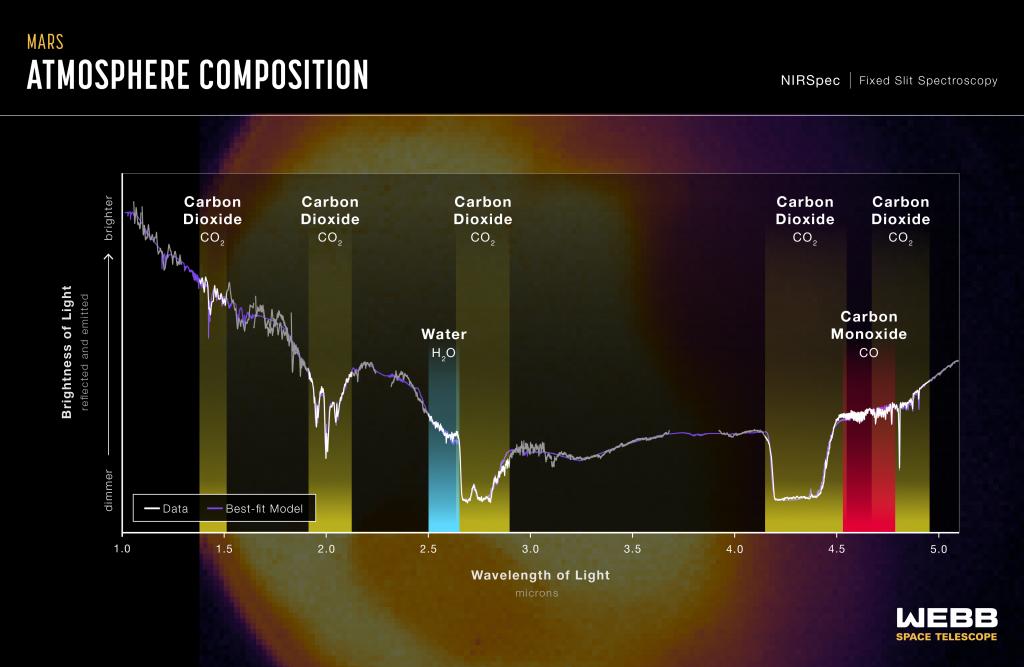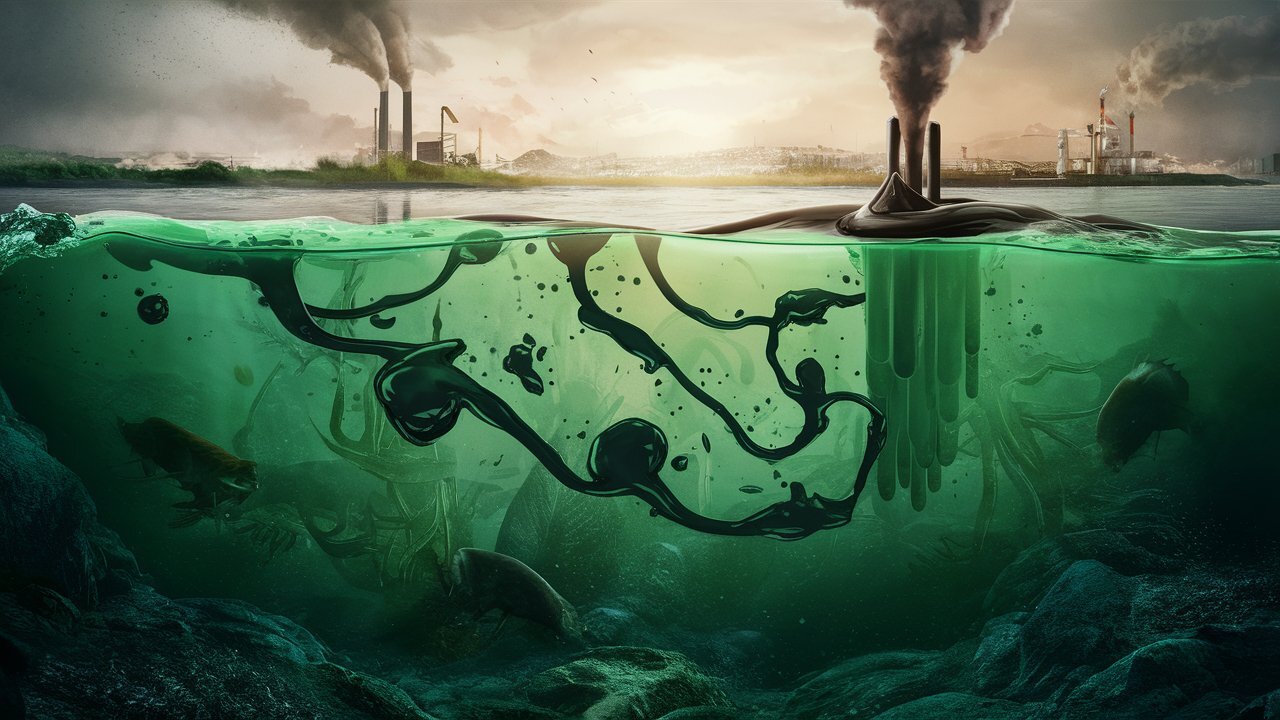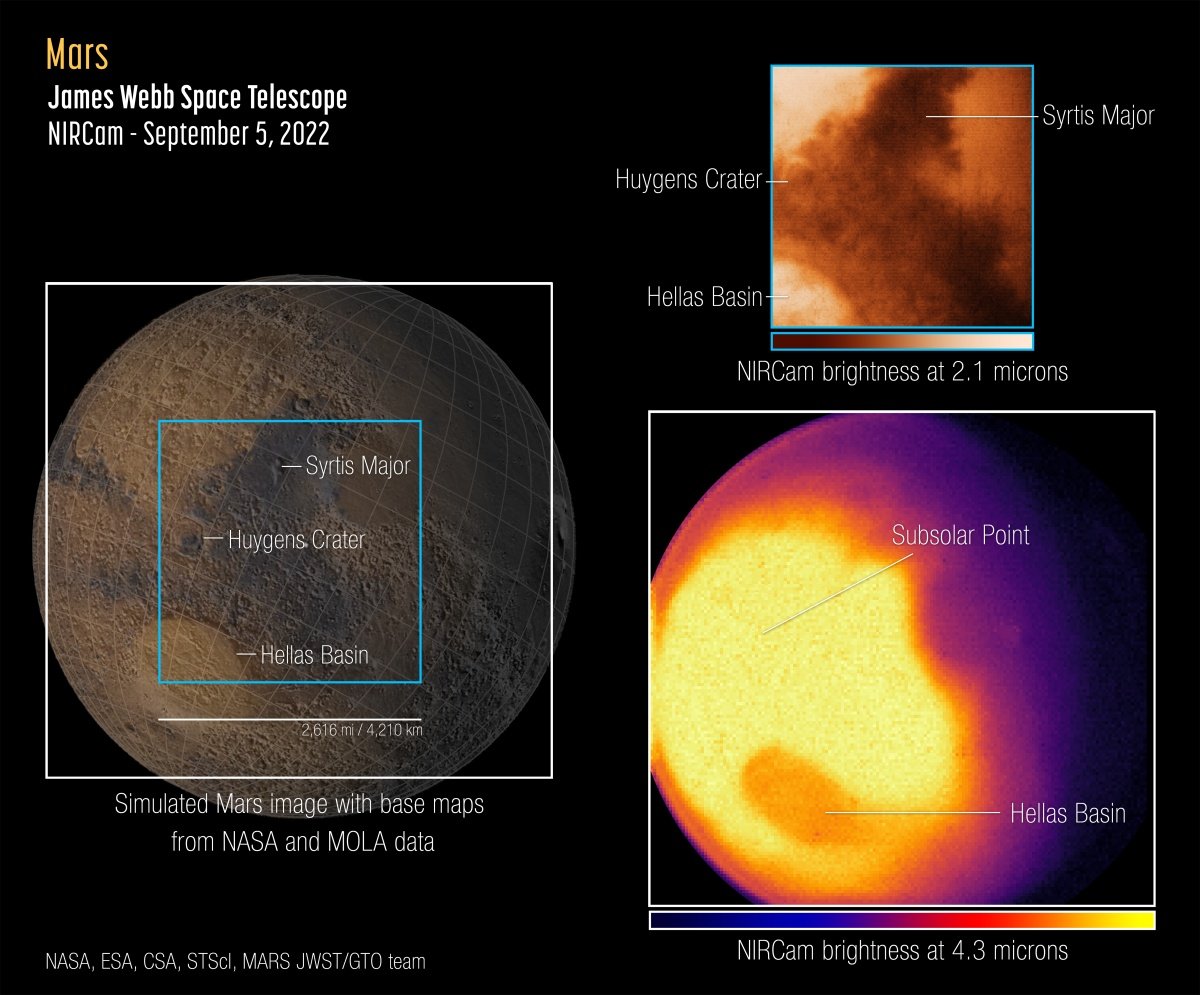HE James Webb Space Telescope (JWST) It successfully captured the first images and spectra of Mars on September 5. The results were published by NASA on Monday (19).
Capturing images was a major challenge for the observatory, as it was designed to target distant galaxies with weak light. Mars, on the other hand, is very close, so the light reflected from the planet saturates the telescope’s lens.
However, it was possible to tune the extreme brightness of Mars by using very short exposures, measuring only a fraction of the light reaching the detectors, and applying special data analysis techniques.
The results are images with the spectral resolution needed to study short-term events such as dust storms, weather patterns, seasonal changes, and processes that occur at different times of day, sunset, and night.
Check out the images of Mars released by NASA:
The first images, on the left, show a surface reference map of the planet; on the right, a region of the eastern hemisphere of Mars with two different wavelengths or colors of infrared light.
The shorter wavelength upper right image is dominated by reflected sunlight and reveals surface details similar to those seen in visible light images (left map). Inside, the rings of Huygens Crater, the dark volcanic rock of Syrtis Major, and the glow from the Hellas Basin can be seen.
The lower, longer wavelength image shows thermal emission from Mars – light emitted as the planet loses heat. The brightest region is where the Sun hits it. The brightness decreases towards the polar regions that receive less sunlight.
Spectroscopy images revealed subtle differences in brightness between hundreds of different wavelengths that represent the planet as a whole.
Preliminary analysis reveals that spectral dips occur at specific wavelengths where light is absorbed by molecules in the Martian atmosphere, particularly carbon dioxide, carbon monoxide and water.
 NASA, ESA, CSA, STScI, Mars JWST/GTO team.
NASA, ESA, CSA, STScI, Mars JWST/GTO team. Astronomers will now analyze spectral features to gather additional information about Mars’ surface and atmosphere.
Source: Tec Mundo
I am Bret Jackson, a professional journalist and author for Gadget Onus, where I specialize in writing about the gaming industry. With over 6 years of experience in my field, I have built up an extensive portfolio that ranges from reviews to interviews with top figures within the industry. My work has been featured on various news sites, providing readers with insightful analysis regarding the current state of gaming culture.













